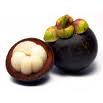Since childhood I loved the Solkadi (kokum and coconut milk curry)that my mom made at home , and i also remember enjoying kokum sarbat during summers, i loved the taste but was oblivious to the health benefits this wild fruit growing in our neighborhood had to offer.
The more I research into this wonder fruit, the more I am amazed with its health beneficial properties.
According to the Resource Book on Kokum, published by the Western Ghats Kokum Foundation this, inexplicably, is indeed one of the most underexploited trees in India. Different regions know it by different names: Bindin, Biran, Bhinda, Kokum, Katambi, Ratamba or Amsol. In English it is called mangosteen, wild mangosteen, or red mango. However, there differences in tastes. Mangosteen, especially grown in Southeast Asia and Central and South America have more richly luscious pulp. They are also sweeter. Most kokum, although they have the same health benefits, are on the sour side. Therefore traditionally, in the cuisine of the Konkan or Indian west coast, the inner segments of fruit flesh have been discarded and only the dried peel is used. However, one can use the actual fruit as well. One just needs to make adjustments so that the sour taste does not become overwhelming.
The fruit can be used in so many different ways: in cooking, as juice, in medicine and in cosmetics, to name just a few of the known areas of benefit. Although a native of, yet commercially underexploited in India, kokum or mangosteen is far more appreciated in – the USA, or in Thailand and other countries in Southeast Asia where branded kokum products on such XanGo, Thai-Go, Mangosteen-Plus, or Mango-Xan have become household names, at least among circles interested in organic food and integrative health. In India nothing of this sort has been tried, yet. Here, it is mostly the locals along the Arabian Sea coast that know and make use of how good and versatile a fruit kokum really is.
In the USA kokum went mainstream, about ten years ago. A company and product named XanGo, created waves after 2002 when it became the fastest growing network marketing company at the time: Their research claimed that the powerful phyto-nutrients contained in the rind of the kokum fruit, and thus their preparations have manifold health benefits. It was said that they help:
· Maintain intestinal health
· Support the immune system
· Neutralize free radicals
· Support cartilage and joint function
· Promote a healthy seasonal respiratory system
South Asian as well as South East Asian folk medicine confirms the claim. According to Southeast Asian folklore, kokum rind was used to make a tea for problems such as diarrhea, bladder infections and gonorrhea. Here in South India, kokum juice has also been around forever. When compared to commercial bottled drinks it is a healthier and far more refreshing option. It acts as an appetite stimulant and also has anti-helmintic properties (i.e. it eliminates worms).
Traditional Ayurvedic medicine uses preparations from the fruit externally and in infusions to treat skin ailments, rashes, burns, chaffed skin and scalds. It is also applied to provide relief from sunstroke, tackle dysentery, and mucus diarrhea. Traditional Chinese Medicine likewise makes use of preparations from the mangosteen fruit, for example in the treatment of dysentery.
All of these traditional uses, again, have in turn been verified by modern laboratory studies. Modern day tests corroborated that the compounds contained in the kokum rind, namely alpha-mangosteen, beta-mangosteen, garcinone B, and garcinone E (collectively labeled as xanthones) have anti-inflammatory, anti-microbial, anti-fungal and antiseptic properties. Furthermore test tube experiments have revealed that, as powerful anti-oxidants, xanthones may actually help in the fight against cancer; they have shown to be carcinogenic for some cancer cells, at least in vitro.
A major test recognized as the industry standard for measuring anti-oxidant activity is known as “Oxygen Radical Absorbance Capacity (ORAC)”. USDA researchers at Tufts University developed it. Total ORAC value measures total antioxidant strength of any substance. It is therefor a valuable tool in establishing the medicinal value in a food. A high ORAC value corresponds to high antioxidant strength. In this context it comes as noteworthy piece of news that the antioxidant power of the whole mangosteen fruit juice has an ORAC value of 17,000 per gram. In comparison, whole blueberries, a rich source of antioxidants, has an ORAC value of 61 units per gram, while pomegranates has an ORAC value of 105 units per gram. Kokum or mangosteen must indeed be considered as the fruit highest in anti-oxidant value and action.
But even with this the list of the kokum benefits has not come to an end just yet. We need to add at least one more: kokum as a slimming agent: Hydroxycitric (HCA) acid is one of its known ingredients. It has recently been patented as hypocholesterolaemic agent. In lay-man's words, HCA combats obesity. It suppresses fatty acid synthesis and lipogensis. How so, you may ask?
According to www.kokumbenefits.com, “HCA suppresses the enzymes that convert excess calories from food into body fat. Besides thwarting the production of fat, this action causes excess calories to be converted into glycogen, which is stored in skeletal muscles and the liver. When glycogen levels rise in the body, gluco-receptors in the liver are stimulated. These receptors send signals to the brain, which act to suppress appetite. In the meantime, as stored fat is burned by the body’s normal metabolic processes, it is not replaced. This combined effect of fat depletion, inhibited fat storage, and reduced food consumption makes kokum a very potent weight loss agent.”
A great healthy way to refresh yourself is by sipping onto a glass of Sparkling Kokam, its tasty, its healthy and a great option to avoid the regular soft drinks!!
I love it!!http://osoda.webs.com/
http://osoda.webs.com/
The more I research into this wonder fruit, the more I am amazed with its health beneficial properties.
According to the Resource Book on Kokum, published by the Western Ghats Kokum Foundation this, inexplicably, is indeed one of the most underexploited trees in India. Different regions know it by different names: Bindin, Biran, Bhinda, Kokum, Katambi, Ratamba or Amsol. In English it is called mangosteen, wild mangosteen, or red mango. However, there differences in tastes. Mangosteen, especially grown in Southeast Asia and Central and South America have more richly luscious pulp. They are also sweeter. Most kokum, although they have the same health benefits, are on the sour side. Therefore traditionally, in the cuisine of the Konkan or Indian west coast, the inner segments of fruit flesh have been discarded and only the dried peel is used. However, one can use the actual fruit as well. One just needs to make adjustments so that the sour taste does not become overwhelming.
The fruit can be used in so many different ways: in cooking, as juice, in medicine and in cosmetics, to name just a few of the known areas of benefit. Although a native of, yet commercially underexploited in India, kokum or mangosteen is far more appreciated in – the USA, or in Thailand and other countries in Southeast Asia where branded kokum products on such XanGo, Thai-Go, Mangosteen-Plus, or Mango-Xan have become household names, at least among circles interested in organic food and integrative health. In India nothing of this sort has been tried, yet. Here, it is mostly the locals along the Arabian Sea coast that know and make use of how good and versatile a fruit kokum really is.
In the USA kokum went mainstream, about ten years ago. A company and product named XanGo, created waves after 2002 when it became the fastest growing network marketing company at the time: Their research claimed that the powerful phyto-nutrients contained in the rind of the kokum fruit, and thus their preparations have manifold health benefits. It was said that they help:
· Maintain intestinal health
· Support the immune system
· Neutralize free radicals
· Support cartilage and joint function
· Promote a healthy seasonal respiratory system
South Asian as well as South East Asian folk medicine confirms the claim. According to Southeast Asian folklore, kokum rind was used to make a tea for problems such as diarrhea, bladder infections and gonorrhea. Here in South India, kokum juice has also been around forever. When compared to commercial bottled drinks it is a healthier and far more refreshing option. It acts as an appetite stimulant and also has anti-helmintic properties (i.e. it eliminates worms).
Traditional Ayurvedic medicine uses preparations from the fruit externally and in infusions to treat skin ailments, rashes, burns, chaffed skin and scalds. It is also applied to provide relief from sunstroke, tackle dysentery, and mucus diarrhea. Traditional Chinese Medicine likewise makes use of preparations from the mangosteen fruit, for example in the treatment of dysentery.
All of these traditional uses, again, have in turn been verified by modern laboratory studies. Modern day tests corroborated that the compounds contained in the kokum rind, namely alpha-mangosteen, beta-mangosteen, garcinone B, and garcinone E (collectively labeled as xanthones) have anti-inflammatory, anti-microbial, anti-fungal and antiseptic properties. Furthermore test tube experiments have revealed that, as powerful anti-oxidants, xanthones may actually help in the fight against cancer; they have shown to be carcinogenic for some cancer cells, at least in vitro.
A major test recognized as the industry standard for measuring anti-oxidant activity is known as “Oxygen Radical Absorbance Capacity (ORAC)”. USDA researchers at Tufts University developed it. Total ORAC value measures total antioxidant strength of any substance. It is therefor a valuable tool in establishing the medicinal value in a food. A high ORAC value corresponds to high antioxidant strength. In this context it comes as noteworthy piece of news that the antioxidant power of the whole mangosteen fruit juice has an ORAC value of 17,000 per gram. In comparison, whole blueberries, a rich source of antioxidants, has an ORAC value of 61 units per gram, while pomegranates has an ORAC value of 105 units per gram. Kokum or mangosteen must indeed be considered as the fruit highest in anti-oxidant value and action.
But even with this the list of the kokum benefits has not come to an end just yet. We need to add at least one more: kokum as a slimming agent: Hydroxycitric (HCA) acid is one of its known ingredients. It has recently been patented as hypocholesterolaemic agent. In lay-man's words, HCA combats obesity. It suppresses fatty acid synthesis and lipogensis. How so, you may ask?
According to www.kokumbenefits.com, “HCA suppresses the enzymes that convert excess calories from food into body fat. Besides thwarting the production of fat, this action causes excess calories to be converted into glycogen, which is stored in skeletal muscles and the liver. When glycogen levels rise in the body, gluco-receptors in the liver are stimulated. These receptors send signals to the brain, which act to suppress appetite. In the meantime, as stored fat is burned by the body’s normal metabolic processes, it is not replaced. This combined effect of fat depletion, inhibited fat storage, and reduced food consumption makes kokum a very potent weight loss agent.”
A great healthy way to refresh yourself is by sipping onto a glass of Sparkling Kokam, its tasty, its healthy and a great option to avoid the regular soft drinks!!
I love it!!http://osoda.webs.com/
http://osoda.webs.com/



